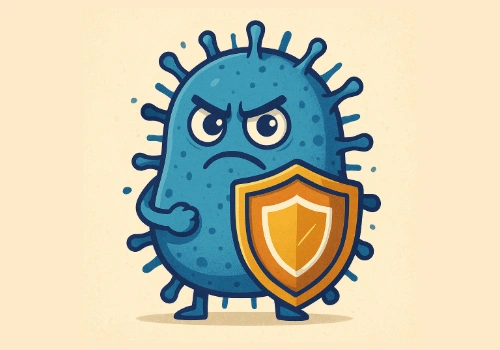.webp)
Each fall and winter, California sees a rise in norovirus—the highly contagious “stomach bug” that causes sudden vomiting and diarrhea. Outbreaks commonly hit schools, long-term care facilities, restaurants, and shelters, and can ripple through families quickly. Here’s the California-specific picture—and how to protect your household.
Why California Sees Norovirus Spikes
- Seasonality: In the U.S., norovirus activity typically ramps up from late fall through spring, peaking in winter. California is no exception.
- High-risk settings: LA County notes frequent spread in schools, food service, nursing facilities, and crowded congregate settings, where one sick person can expose many.
- Food links (especially shellfish): Raw or undercooked oysters can carry norovirus; coastal states, including California, periodically report oyster-linked clusters. If you eat oysters, choose reputable sources and make sure they’re cooked through.
Fast Symptoms & When They Start
Norovirus often strikes suddenly 12–48 hours after exposure with:
- Nausea, vomiting, watery diarrhea
- Stomach cramps, low-grade fever, body aches
Most recover in 1–3 days, but dehydration is the top concern for young children, older adults, and those with chronic conditions.
Call a clinician urgently if you notice
- Signs of dehydration (dry mouth, dizziness, infrequent/dark urine)
- Vomiting or diarrhea lasting >72 hours
- Blood in stool or vomit, high fever, or severe abdominal pain
How Norovirus Spreads (And Lingers)
- Tiny dose needed: Very small amounts of virus can make you sick.
- Hardy on surfaces: Norovirus can survive on doorknobs, counters, and bathroom fixtures for days without proper disinfection.
- Food handling matters: Food workers with symptoms (or soon after) can unintentionally contaminate food and prep areas, driving outbreaks.
California-Smart Prevention
- Wash hands with soap and water for 20 seconds—especially after bathroom use/diaper changes and before eating. (Alcohol hand rubs are less effective against norovirus.)
- Disinfect correctly: Clean vomit/diarrhea accidents with a bleach solution (follow label; many public-health guides recommend a chlorine bleach dilution for norovirus). Ensure good ventilation and wear gloves
- Keep sick people home: Stay off work/school and avoid food prep for at least 48 hours after symptoms stop.
- Handle shellfish safely: Avoid raw oysters during regional advisories; cook thoroughly.
Treatment: What Actually Helps
There’s no antiviral for norovirus. Treatment focuses on hydration and rest:
- Frequent small sips of water or oral rehydration solution
- Return to bland foods as tolerated (broth, rice, bananas, toast)
Seek care if you can’t keep fluids down or dehydration worsens.
For Schools, Facilities, and Restaurants
California health departments emphasize rapid isolation of ill individuals, strict exclusion from food handling, and correct bleach-based cleaning of shared bathrooms and high-touch surfaces to stop spread during outbreaks. If you manage a facility, coordinate promptly with your local health department for outbreak guidance.
The Bottom Line: Stay Ahead of Norovirus in California
Norovirus is an unwelcome but familiar visitor during California’s colder months. With its rapid spread and tough-to-kill nature, prevention is your best protection. Wash your hands often, disinfect shared spaces correctly, and stay home when sick to help stop community outbreaks before they start.
If you or a family member are struggling with dehydration, ongoing vomiting, or diarrhea that doesn’t improve, don’t wait—schedule an appointment with a BASS Medical Group provider. Our clinicians can help you manage symptoms safely and recover faster.
BASS Medical Group serves communities across California with comprehensive primary and specialty care—so you can stay healthy all season long.
Frquently Asked Questions
Is norovirus “going around” in California right now?
Activity typically rises late fall through winter. Check your county health department updates if you suspect an outbreak at a school or facility.
How long am I contagious?
People are most contagious while symptomatic and for a couple of days after. Some may shed virus longer—hence the 48-hour rule before returning to food handling.
Do disinfecting wipes work?
Not all do. Use EPA-registered products with a norovirus claim or a fresh bleach solution per label. Soap-and-water cleaning first helps remove organic matter.
Can I prevent it by avoiding restaurants?
The biggest wins are handwashing and staying home when sick. California food facilities must follow exclusion and sanitation rules; most outbreaks trace to lapses in those basics.




